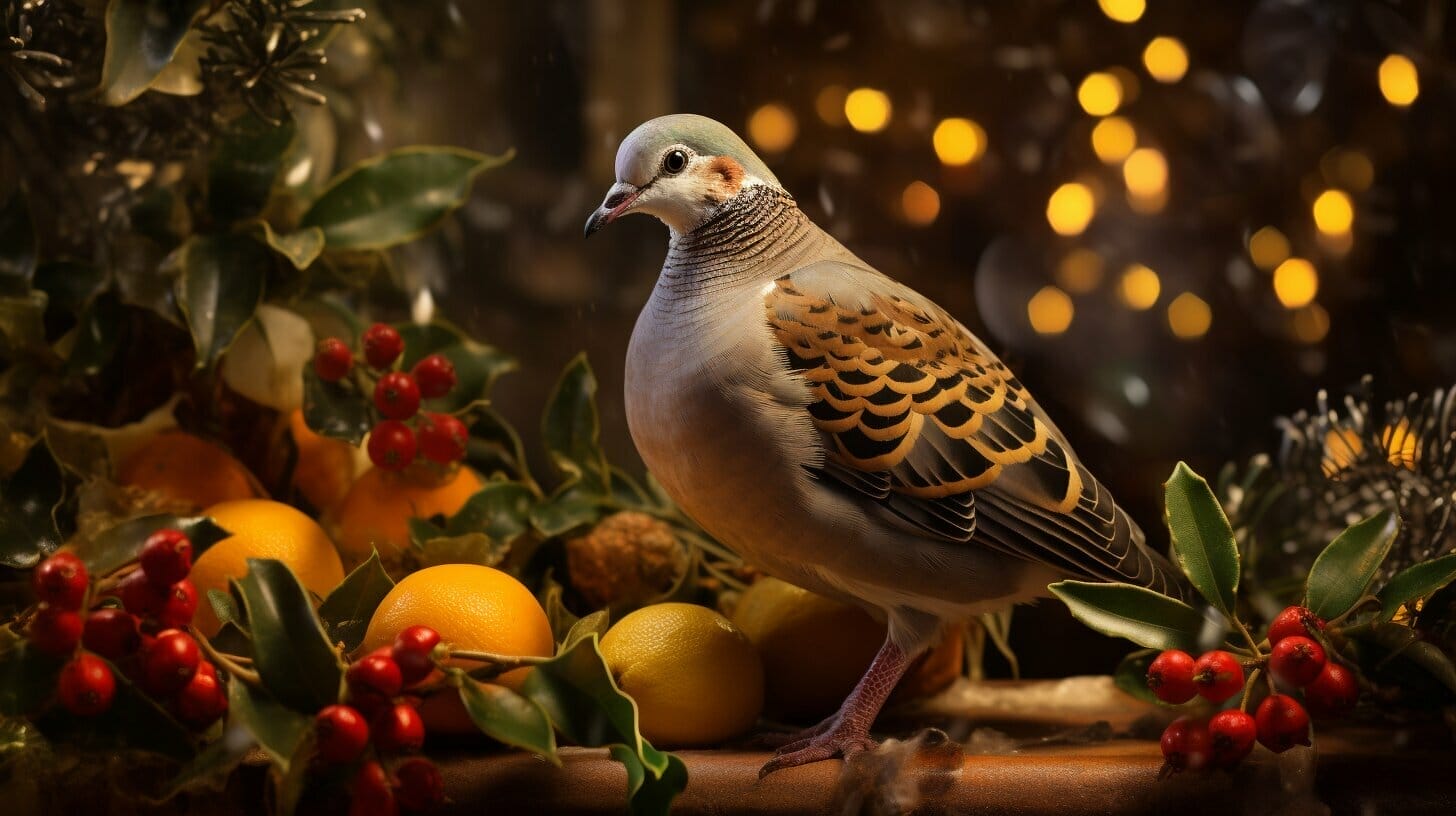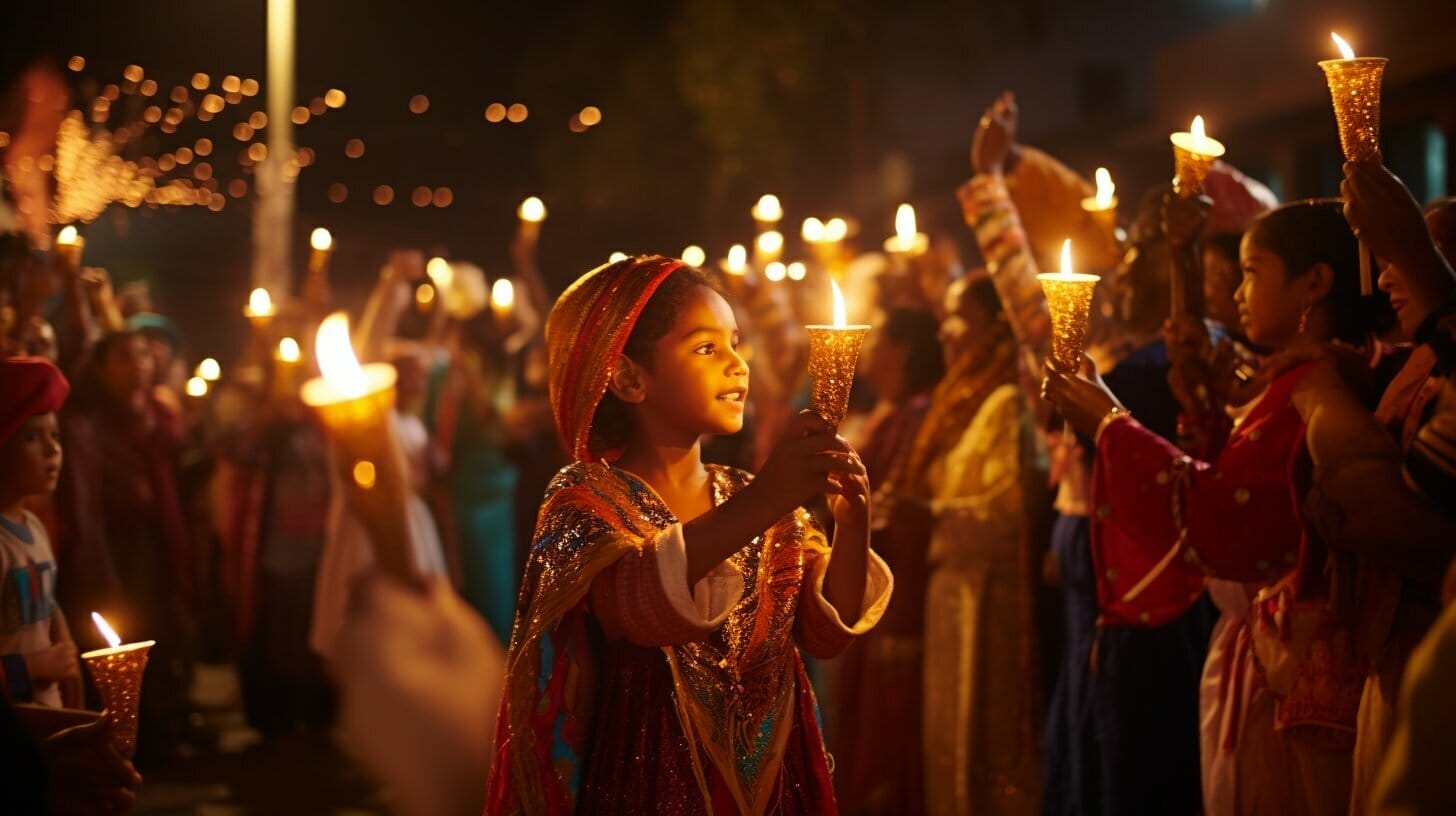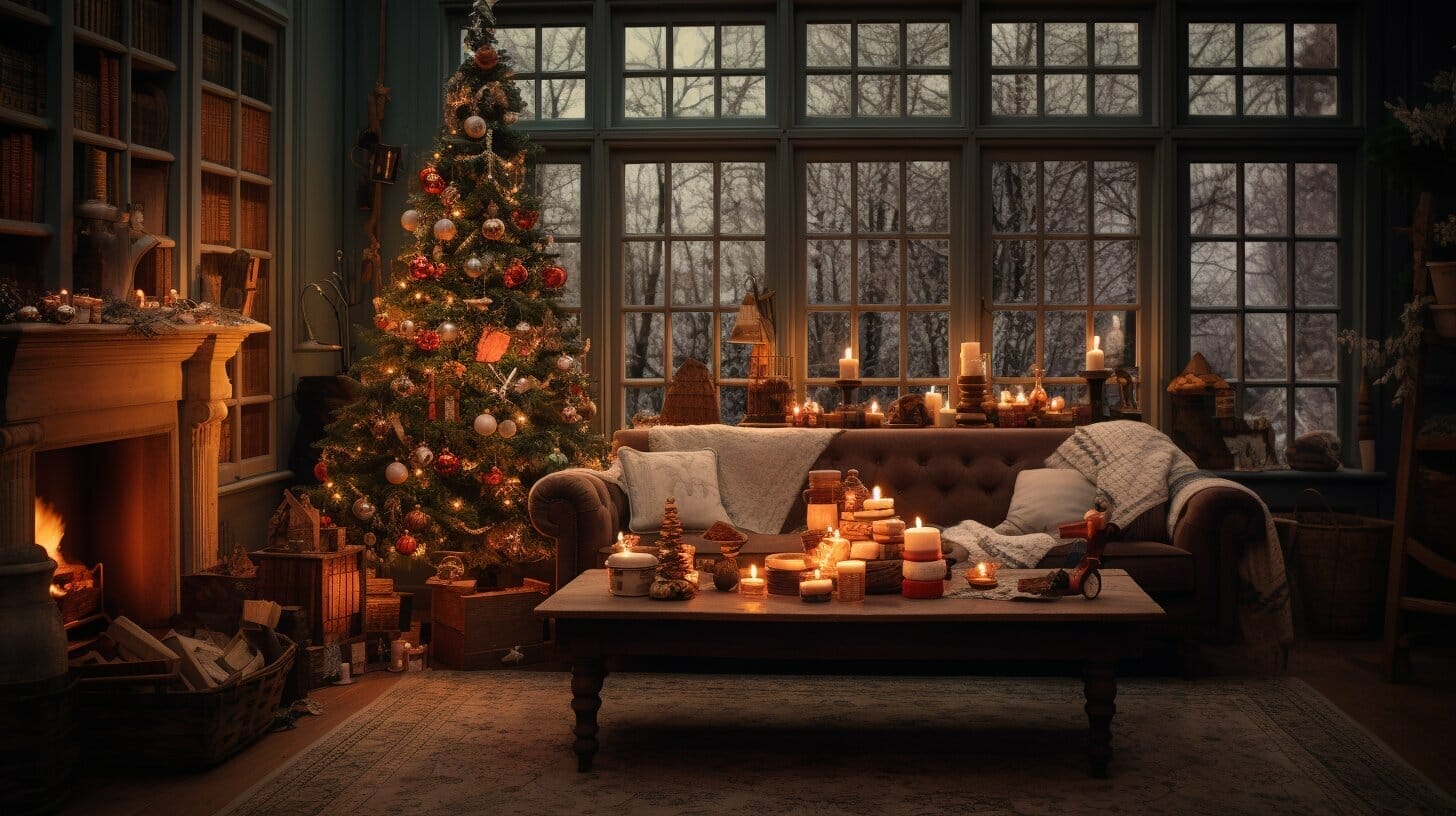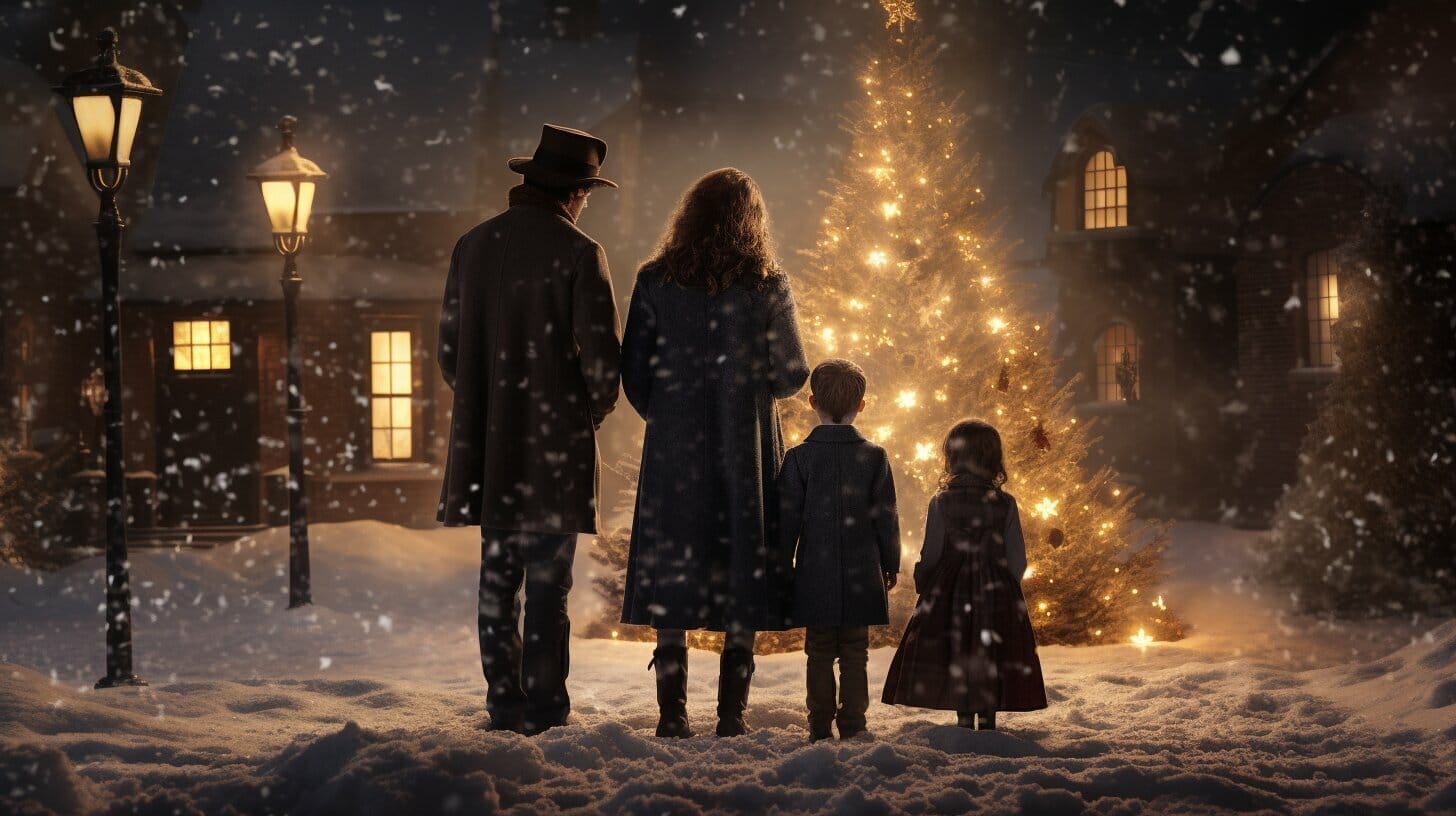The Christmas Calendar
Lost in Tradition – Rediscovering the Christmas Calendar
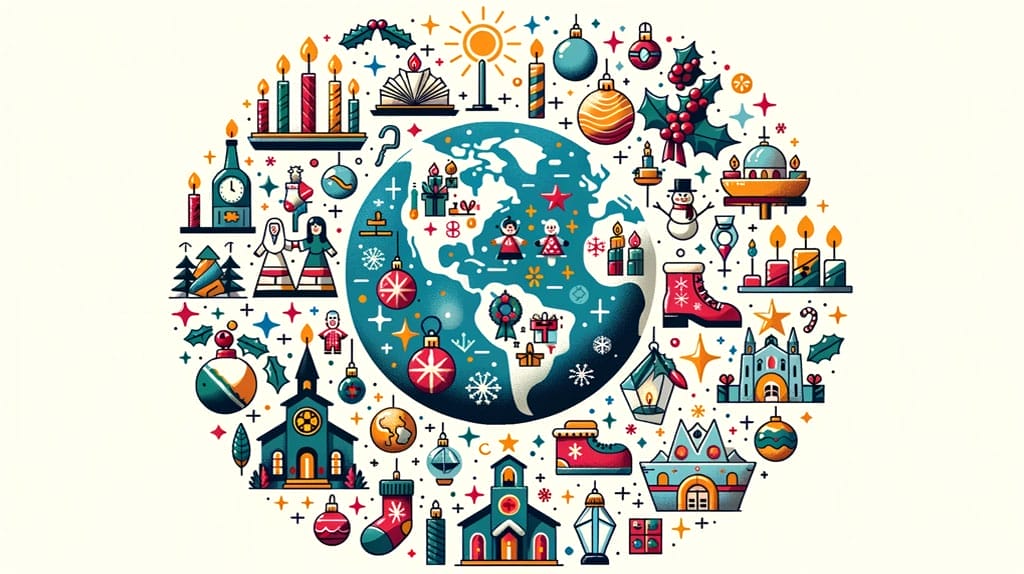
The festive season is filled with joy, traditions, and special days that many people around the world look forward to. It is a tapestry of celebrations, and significant dates observed across the globe. This Christmas calendar serves as a window into the diverse ways people come together to celebrate the spirit of joy, reflection, and community.
From the religious significance of Advent and Epiphany to global festivities like Nochebuena in Spain and Simbang Gabi in the Philippines, this guide offers a deep dive into the heart of the season.
It’s not just about marking dates on a calendar; it’s about understanding the stories, customs, and shared emotions that unite us during this special time of year. Whether you’re looking to enrich personal celebrations or gain insights into global customs, this article promises a journey through the very essence of the Christmas season.
Religiously Significant Dates
| Date (or Date Range) | Event Name |
|---|---|
| Nov 29 – Dec 24 | Advent |
| Dec 6 | Feast Day of St. Nicholas |
| Dec 25 – Jan 5 | The 12 Days of Christmas |
| Dec 25 | Christmas Day |
| Jan 6 | Epiphany |
| Feb 2 | Candlemas |
Advent (Nov 29 – Dec 24)
Advent is a deeply cherished period that heralds the approach of Christmas. Centered around the theme of anticipation and preparation, it commemorates the awaiting of the birth of Jesus Christ. This significant period encompasses four Sundays, commencing from late November or early December, and culminates on the eve of Christmas.
As a testament to the reverence of this season, numerous churches across the world conduct special services. It’s a common tradition for them to light a candle on each of these four Sundays, symbolizing hope, peace, joy, and love.
Advent Explained – The Journey Towards Christmas
As the year draws to a close, the month of December is filled with many Christmas traditions and festivities. But for Christians around the world, December holds a special significance. It is the start of the Advent season,…
In addition to church practices, the Advent season has also found its way into homes, predominantly through the use of Advent calendars. These advent calendars have become an integral part of family traditions. With each passing day, a door or window on the calendar is opened, unveiling either a picture, an inspiring verse, or occasionally, a delightful treat. This daily ritual not only serves as a reminder of the approaching festive day but also infuses a sense of excitement and joy, making the countdown to Christmas an engaging and memorable experience.
Feast Day of St. Nicholas (Dec 6)
St. Nicholas, often regarded as the precursor to the modern Santa Claus, is fondly remembered for his boundless kindness and special affection towards children. On December 6th, his legacy is celebrated as his feast day, a tradition that dates back centuries.
This particular day is infused with joy, generosity, and a spirit of giving. In various traditions across the globe, children eagerly participate by placing their shoes or stockings outside their bedroom doors, or sometimes beside the fireplace, on the eve of December 6th.
As dawn breaks, they wake up to discover that St. Nicholas has visited, leaving behind delightful presents, a variety of sweets, or even shimmering coins in their shoes. This heart-warming tradition serves as a wonderful introduction to the ensuing festive season, bringing families and communities closer in celebration.
Christmas Day (Dec 25)
December 25th stands as a significant and revered date, marking the celebration of Jesus’ birth, an event honored by countless individuals globally. This day is undoubtedly the pinnacle of the Christian calendar, a moment where the essence of faith and devotion shines the brightest.
Across continents, churches open their doors to congregations, conducting special, heartfelt services that resonate with the spirit of the occasion. Concurrently, homes become hubs of warmth and togetherness as families unite, indulging in festive meals, exchanging thoughtful gifts, and recounting the profound story of Jesus’ birth in the humble town of Bethlehem.
The ambiance is further enriched with the display of nativity scenes, capturing the sacred event’s essence, and the melodious sounds of carol singing echoing in the air. Indeed, December 25th is a day deeply rooted in tradition, faith, and overwhelming joy.
The 12 Days of Christmas (Dec 25 – Jan 5)
Beginning on Christmas Day and culminating on January 5th, the 12 Days of Christmas represent a cherished period filled with festivities and religious significance. Spanning these twelve days, believers and celebrants alike commemorate the birth of Jesus Christ and reflect upon his teachings that have shaped Christian beliefs.
What is Christmastide and The Twelve Days of Christmas
Christmastide, also commonly known as the Christmas season, is a term deeply entrenched in Christian traditions, symbolizing a significant period in the liturgical calendar. The word itself is a blend of “Christmas” and the Old English term “tīd,”…
Each of these days is associated with a distinct religious event or biblical story, emphasizing the profound depth of this celebratory period. A common misconception is that the well-loved song “The Twelve Days of Christmas” is merely a festive tune. In reality, every gift mentioned in the song symbolizes an aspect of the Christian faith, adding another layer of richness to the traditions of these twelve days.
Epiphany (Jan 6)
Epiphany, often referred to as “Three Kings’ Day,” holds significant importance and is celebrated on January 6th. This day commemorates the historical event when the three wise men, also known as the magi or the three kings, undertook a journey to visit the newborn Jesus. Upon meeting Him, they presented Him with precious gifts of gold, frankincense, and myrrh, each symbolizing different aspects of Christ’s future.
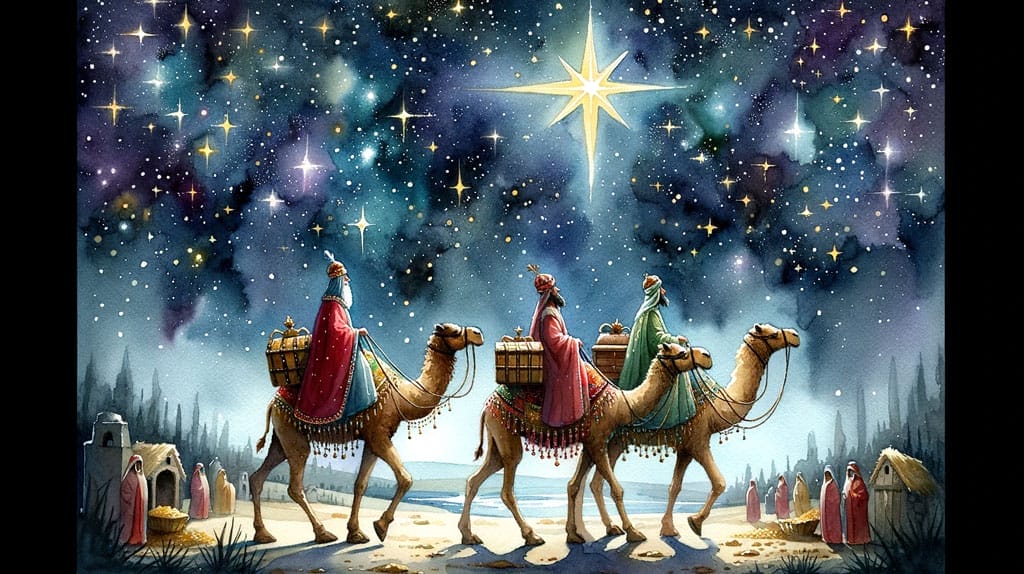
Across various cultures and regions, Epiphany is marked with grand parades showcasing the journey of the magi, special church services that recount the biblical story, and an extension of the festive gift-giving tradition.
The Meaning and Customs of Epiphany or Three Kings’ Day
As the Christmas season comes to an end, the celebration continues with Epiphany, also known as Three Kings’ Day. This Christian feast day, observed on January 6th, commemorates the manifestation of Jesus Christ to the world. The observance…
A popular custom associated with this day is the baking of a special cake or bread. Hidden within this delicacy is a small figure or coin. Tradition holds that the lucky individual who discovers this hidden treasure in their slice is blessed with good fortune for the upcoming year!
Candlemas (Feb 2)
Candlemas celebrated on February 2nd, is a significant day in the Christian calendar that commemorates the event when Mary and Joseph brought the infant Jesus to the temple for dedication, as per Jewish custom.
This day holds a special place because it’s also named after the tradition of lighting candles during church services to mark the occasion. These candles are not just ornamental; they carry a profound meaning. They stand as a radiant symbol of Jesus Christ, representing him as the light of the world who dispels darkness and brings hope.
On this day, many believers take a moment to reflect upon their faith, basking in the symbolic light of the candles and drawing inspiration from its promise of hope and guidance.
Other Important Dates and Global Events
To fully appreciate the festive season, we must also recognize other notable dates and events that, while not strictly religious, play a significant role in global celebrations. Let’s explore these dates:
| Date (or Date Range) | Event Name |
|---|---|
| Dec 21 (or 22) | Winter Solstice |
| Varies | Christmas Markets |
| Dec 26 | Boxing Day |
| Dec 31 | New Year’s Eve |
| Varies | Christmas Parades/Festivals |
Winter Solstice (Dec 21 or 22)
The Winter Solstice, often falling on December 21 or 22, is the shortest day and longest night of the year. Many cultures and traditions celebrate this day as a reminder that brighter days are coming. For centuries, the solstice has been marked with feasts, music, and dancing. It’s a time to gather with loved ones, share stories, and light fires to keep away the darkness. Some believe it’s a time of rebirth and reflection, making it a special moment in the festive calendar.
Winter Solstice Christmas Traditions and Connections
The winter solstice marks the longest night and shortest day of the year, and throughout history, it has been celebrated in various cultures as a time of renewal and rebirth. The Christmas holiday, which falls shortly after the…
In many parts of the world, the Winter Solstice is intertwined with Christmas traditions. For instance, the Yule log, often burned on Christmas Eve, has its roots in solstice celebrations. It’s a beautiful blend of nature’s rhythms and festive joy.
Christmas Markets (Varies)
Christmas markets are a delightful tradition that brings festive cheer to towns and cities worldwide. These markets, often set up in town squares, are filled with stalls selling handmade crafts, festive foods, and warm drinks. The air is filled with the scent of roasted nuts, mulled wine, and spicy gingerbread.
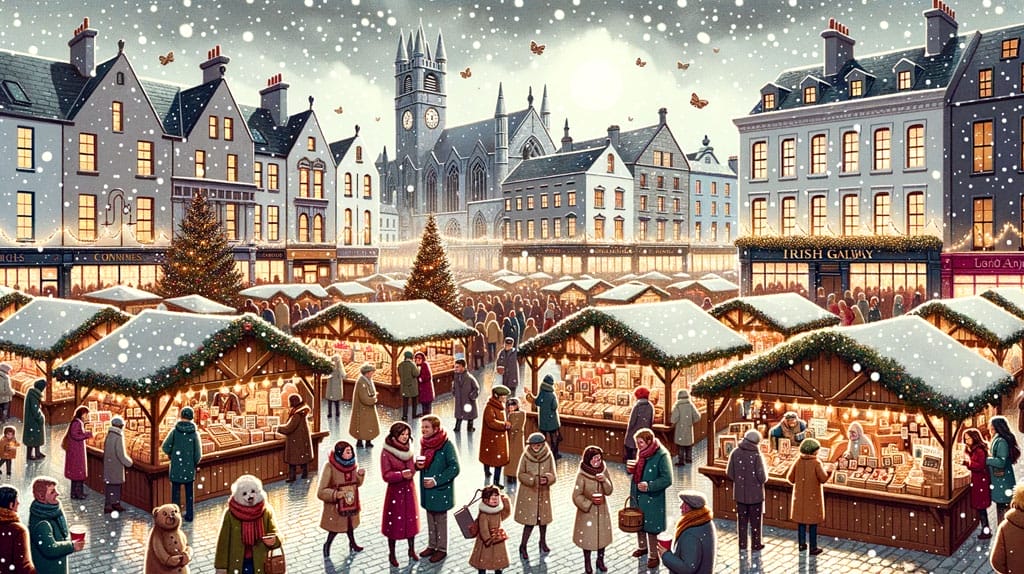
Originating in Germany, these markets, known as “Weihnachtsmarkt”, have become popular worldwide. Walking through a Christmas market, you’ll find beautifully crafted ornaments, wooden toys, and perhaps even a carousel or ice rink for children. It’s a magical experience that offers a taste of old-world charm and the spirit of the season.
Boxing Day (Dec 26)
Boxing Day, celebrated on December 26, is a day steeped in history. While its exact origins are debated, many believe it started in Britain when the rich would give boxes of gifts to their servants or the poor. Nowadays, it’s a public holiday in many countries, often filled with shopping sales, sports events, and family gatherings.
Boxing Day Origin, History and Traditions Revealed
Quick Summary Boxing Day Origins Boxing Day is a holiday celebrated on the day following Christmas Day, which is December 26th. It originated in Great Britain and is also observed in several countries that were part of the…
In some places, Boxing Day is a time for outdoor activities like fox hunting or sporting events. In others, it’s a continuation of Christmas celebrations, where families come together to share leftovers and enjoy each other’s company. No matter the tradition, it’s a day to relax and revel in the festive spirit.
New Year’s Eve (Dec 31)
New Year’s Eve, on December 31, marks the end of the year and the beginning of a new one. It’s a global celebration where people bid farewell to the past year and welcome the new with hope and joy. Fireworks, parties, and countdowns are common sights and sounds as the clock strikes midnight.
Across cultures, New Year’s Eve is a time for reflection and resolutions. People think back on the year’s highs and lows and set goals for the coming year. From watching the ball drop in New York City to lighting lanterns in Asia, the world comes together in hope and celebration.
Christmas Parades/Festivals (Varies)
Christmas parades and festivals are a highlight of the season in many countries. Streets come alive with floats, performers, and festive music. It’s a time for communities to come together and celebrate in grand style. Each parade or festival has its own unique flair, reflecting local traditions and culture.
For example, in the USA, the Macy’s Thanksgiving Day Parade in New York City is a much-loved event that kicks off the festive season. In other parts of the world, lantern festivals, boat parades, or even beach celebrations might be the norm. These events add color, joy, and a sense of community to the festive season.
Global Festive Dates and Celebrations
Around the world, the festive season is marked by a myriad of unique traditions and celebrations. Let’s explore these global events and their dates:
| Date (or Date Range) | Event Name | Country/Region |
|---|---|---|
| Dec 13 | St. Lucia’s Day | Sweden |
| Dec 24 | Nochebuena | Spain, Latin America |
| Jan 7 | Orthodox Christmas | Russia, Egypt, etc. |
| Dec 26 | Day of Goodwill | South Africa |
| Dec 31 – Jan 1 | Hogmanay | Scotland |
| Jan 6 | La Befana | Italy |
| Dec 12 | Dia de la Virgen de Guadalupe | Mexico |
| Dec 16 – Dec 24 | Simbang Gabi | Philippines |
| Dec 24 – Jan 6 | Jól | Iceland |
| Dec 24 | Réveillon | France |
| Dec 6 | Weihnachten (St. Nikolaus) | Germany |
| December (varies) | Christkindlmarkt | Austria |
| Dec 5 | Sinterklaas | Netherlands |
| Dec 24 – 25 | Natal | Brazil |
| Dec 24 | Jul | Norway, Denmark |
| Dec 24 | Wigilia | Poland |
Sinterklaas (Netherlands) – Dec 5
Sinterklaas, or Saint Nicholas, is eagerly awaited by children in the Netherlands. This celebration is distinct from Christmas, with its own set of traditions. Children place their shoes by the fireplace or window, hoping Sinterklaas will fill them with treats. Often, they leave carrots or hay for his horse. Poems might also be exchanged, adding a touch of creativity to the festivities.
Dutch Christmas Traditions
Are you ready to discover the enchanting world of Dutch Christmas traditions? The Netherlands celebrates the season like no other, with beloved figures like Sinterklaas and Zwarte Piet, festive foods, songs, and holiday customs that have been passed…
The figure of Sinterklaas is depicted as a kind bishop, accompanied by helpers. He arrives by boat from Spain and then parades through towns on his horse. It’s a joyous time, marked by songs, sweets, and the anticipation of the main event on December 5th.
Weihnachten & St. Nikolaus (Germany) – Dec 6
December in Germany is a magical time. On the 6th, children celebrate Saint Nikolaus, a figure known for his kindness. Unlike the familiar Santa Claus, Nikolaus visits homes in his bishop’s attire. Children clean their shoes and leave them outside, hoping to find them filled with sweets and small gifts the next morning.
A Guide to German Christmas Traditions
Willkommen! From advent calendars to Christmas markets, get ready to explore the festive customs and rituals that make German Christmas celebrations truly magical. So put on your favorite Christmas sweater, grab a cup of Glühwein, and let’s get…
This tradition is just a prelude to the main Christmas celebrations in Germany. Festive markets, known as Weihnachtsmärkte, pop up in towns and cities, offering everything from handcrafted goods to traditional foods. The aroma of mulled wine and gingerbread fills the air, setting the scene for the festive season.
Dia de la Virgen de Guadalupe (Mexico) – Dec 12
On December 12th, many in Mexico commemorate the appearance of the Virgin Mary to Juan Diego, an indigenous man. This day is a blend of Catholic and indigenous traditions, and it holds great significance in Mexico. Pilgrims from all over the country travel to the Basilica of Guadalupe in Mexico City to pay their respects.
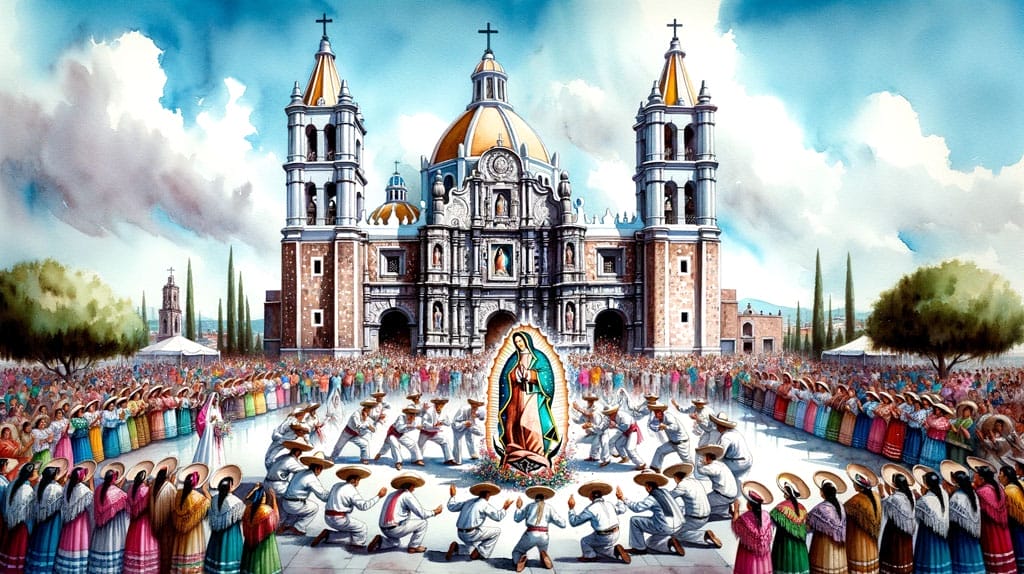
The day is marked by singing, dancing, and colorful processions. Many dress in traditional attire and reenact the story of Juan Diego and the Virgin. It’s a day of deep spiritual reflection, combined with vibrant cultural expressions, making it a unique celebration in the Christmas calendar.
St. Lucia’s Day (Sweden) – Dec 13
December 13th brings light to the Swedish winter darkness. St. Lucia’s Day, or Luciadagen, commemorates Lucia, a young Christian martyr. She’s depicted wearing a white gown with a red sash and a crown of candles. On this day, processions of children, led by a Lucia, sing traditional songs and bring warmth to the cold winter.
In homes and schools, the day starts with a Lucia procession. Girls dressed as Lucia, followed by boys in various roles, bring lussekatter (saffron buns) and ginger biscuits. The celebration is a blend of Christian tradition and older Nordic customs, symbolizing hope and light in the heart of winter.
Simbang Gabi (Philippines) – Dec 16-24
In the Philippines, the anticipation of Christmas begins with a series of dawn masses called Simbang Gabi. Starting on December 16th and culminating on Christmas Eve, these masses are a testament to the deep faith of the Filipinos. Churches are adorned with colorful lights and lanterns, and the air is filled with excitement.
After each mass, vendors outside the church sell traditional Filipino holiday treats like ‘bibingka’ (rice cake) and ‘puto bumbong’ (purple rice pastry). Attending all nine masses is believed to grant a special wish, making it a cherished tradition for many Filipinos as they prepare for the grand Christmas celebration.
Nochebuena (Spain, Latin America) – Dec 24
Nochebuena, translating to ‘Good Night’, is the heartwarming celebration of Christmas Eve in Spain and many parts of Latin America. It’s a time for families to gather and share a lavish meal. Unlike the reserved nature of Christmas Day, Nochebuena is bustling with energy, laughter, and joy.
The feast might include dishes like roasted pig, seafood, and turrón (a type of nougat). In Spain, after the meal, many attend the Misa del Gallo, a midnight mass. In parts of Latin America, fireworks light up the night sky. Regardless of the country, Nochebuena is a night of togetherness and festive indulgence.
Jól (Iceland) – Dec 24-Jan 6
In Iceland, the Christmas season, or Jól, is steeped in ancient Norse traditions. Spanning from December 24th to January 6th, it’s a time of merriment, feasting, and folklore. Central to the celebrations are the 13 Yule Lads, mischievous troll-like figures that visit homes, either leaving gifts for good children or playing tricks on the naughty ones.
Jól is also marked by the burning of the Yule Log, festive feasts, and the singing of traditional songs. Another unique figure is the Yule Cat, a giant feline that’s said to lurk in the snowy countryside. The blend of Christian elements with older pagan traditions gives Icelandic Jól its unique charm.
Réveillon (France) – Dec 24
Réveillon is France’s grand feast on Christmas Eve. Following the midnight mass, families gather for a luxurious and extended meal that showcases the best of French cuisine. Dishes might include foie gras, oysters, roasted meats, and a variety of pastries and desserts.
The word ‘réveillon’ comes from the French verb ‘réveiller’, meaning to wake up or revive. And it’s aptly named, as the meal and celebrations often extend into the wee hours of Christmas morning. With its emphasis on gourmet food, fine wine, and family, Réveillon is a culinary highlight of the French festive season.
Weihnachten (Germany) – Dec 24-25
Weihnachten, or Christmas, in Germany is a blend of deep-rooted traditions and festive celebrations. While Saint Nikolaus visits earlier in December, the main Christmas celebrations start on December 24th, known as Heiligabend (Holy Evening). Families come together for a quiet evening, exchange gifts, and share a meal. Popular dishes might include goose, duck, or carp.
Christmas Day is reserved for church visits and a grand festive meal with extended family. Throughout the season, Christmas markets, or Weihnachtsmärkte, play a central role. They’re places to enjoy hot mulled wine, gingerbread, and the festive ambiance. With its rich traditions and festive spirit, Weihnachten in Germany is truly enchanting.
Christkindlmarkt (Austria) – December (varies)
In Austria, the festive season is marked by the charm of Christkindlmarkts or Christmas markets. Held in town squares, these markets are a visual and culinary treat. Wooden stalls adorned with lights and decorations sell a range of products, from handcrafted ornaments to local delicacies.
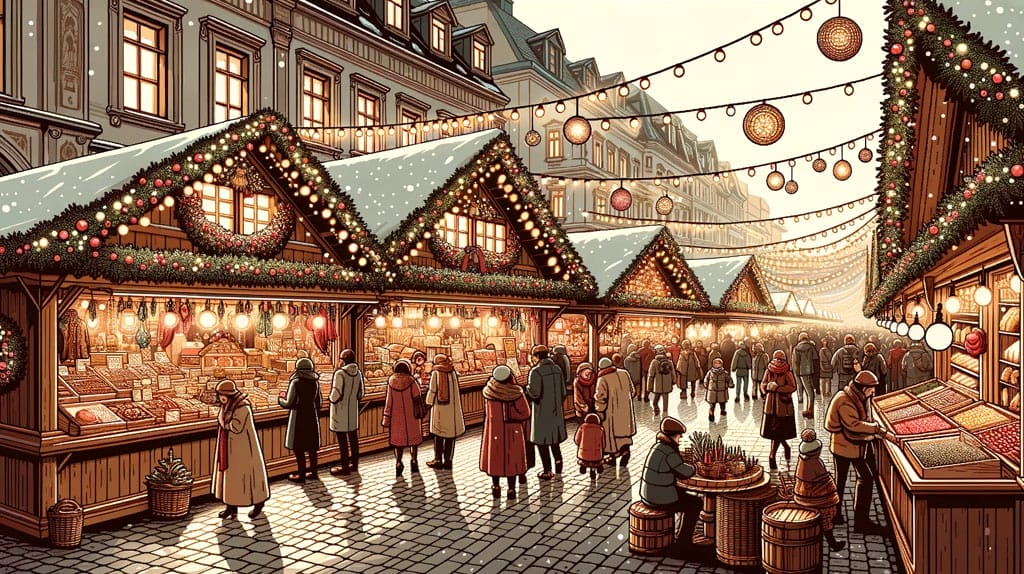
Visitors can enjoy treats like pretzels, sausages, and pastries, all while sipping on warm mulled wine. The highlight for many is the arrival of the Christkind, a golden-haired angel who opens the market. With carol singers in the background and the scent of roasted chestnuts in the air, Christkindlmarkts capture the essence of Austrian Christmas.
Hogmanay (Scotland) – Dec 31-Jan 1
Hogmanay is Scotland’s vibrant celebration of the New Year. More than just a party, it’s a blend of ancient customs and spirited festivities. Torchlight processions, bonfires, and ceilidh dances are integral to Hogmanay. As the clock strikes midnight, the skies light up with fireworks, and people join hands to sing ‘Auld Lang Syne’.
First-footing is a unique custom where the first person to enter a home after midnight brings good luck, especially if they bring symbolic gifts. Whether it’s in the bustling streets of Edinburgh or the quiet corners of the Highlands, Hogmanay is a testament to Scotland’s rich cultural heritage and its hope for the new year.
La Befana (Italy) – Jan 6
La Befana is a cherished Italian tradition celebrated on January 6th, marking the end of the Christmas season. La Befana, often depicted as a kind-hearted witch, flies on her broomstick to deliver gifts to children, filling their stockings with treats or coal, based on their behavior.
Legend says La Befana was approached by the Three Wise Men but declined their invitation to visit baby Jesus. She later regretted it and now searches for him, leaving gifts in her wake. In many Italian towns, parades and festivals are held in her honor, with music, dancing, and, of course, delicious food, making it a joyful conclusion to the festive season.


